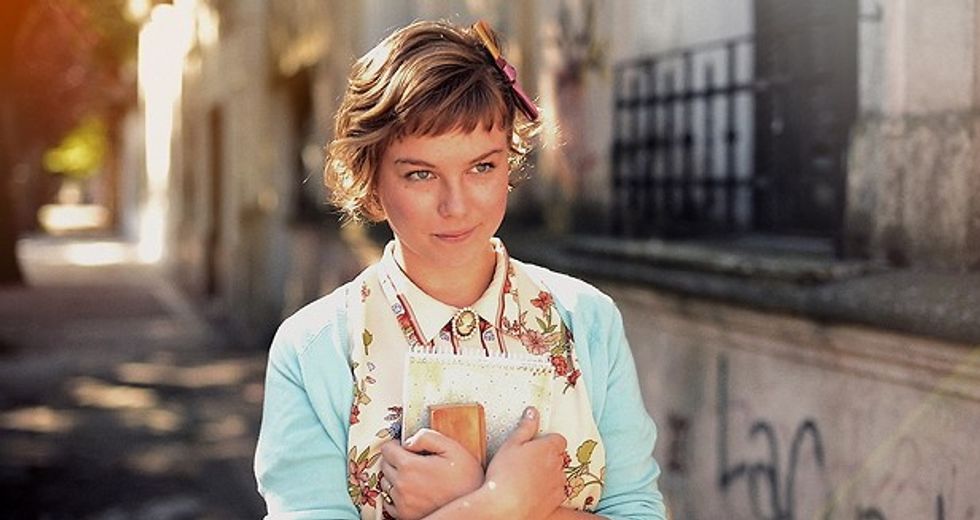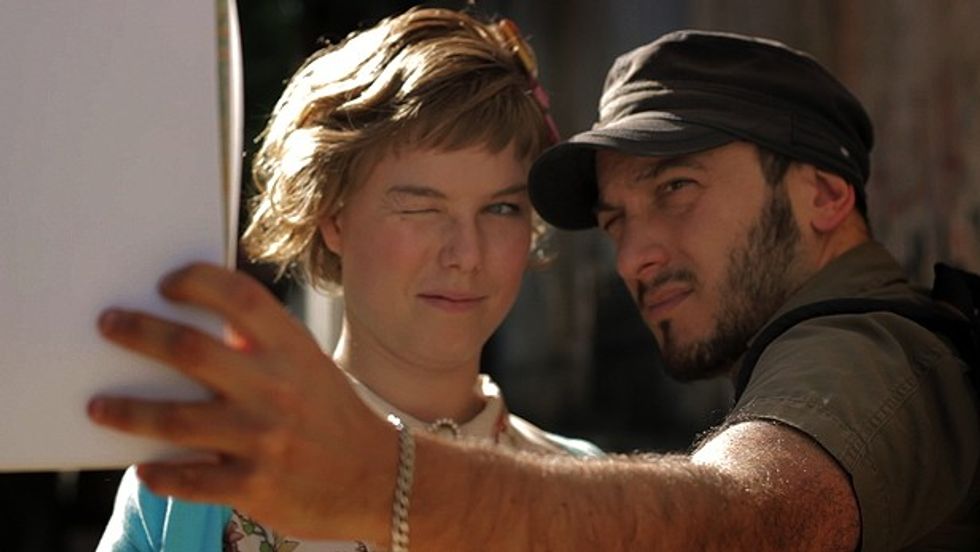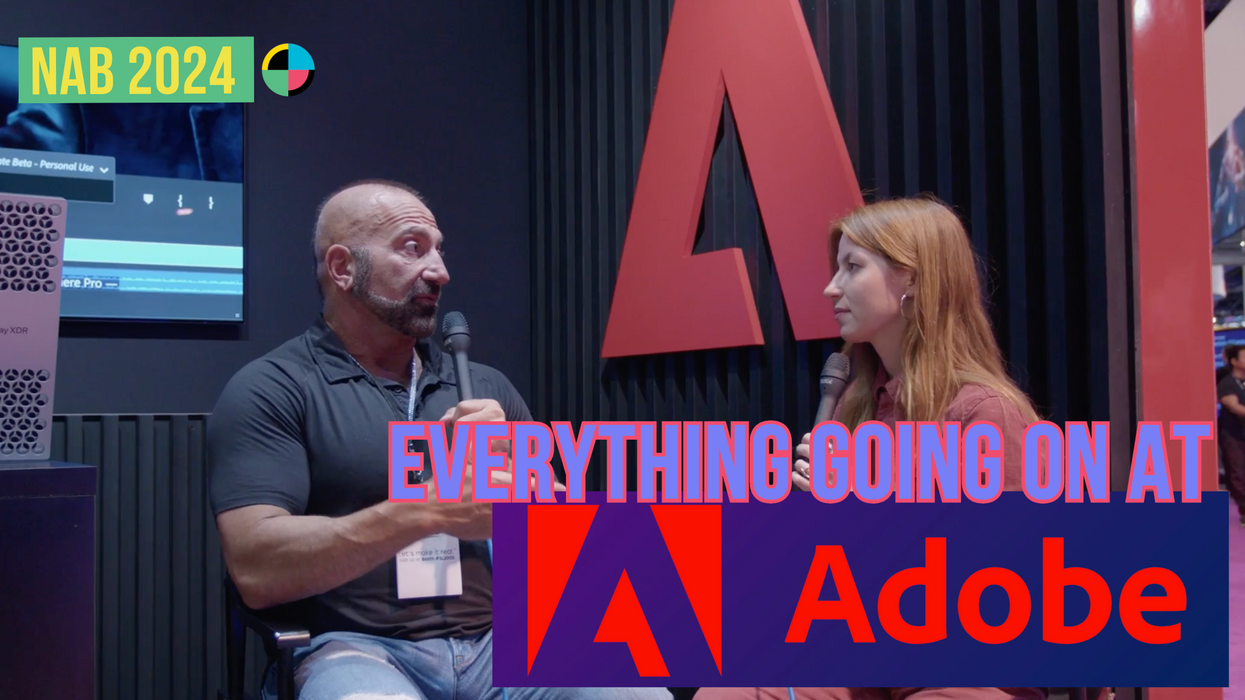Carlos Lascano Talks 'Lila', the Mixed Media Finale to His Viral Hit Trilogy of Shorts
There are short films, really good short films, which within hours of opening their online doors flit from inboxes, to tweets to posts to blogs racking up 100s of 1000s of views as they reach meme velocity, and while that's a status any of us would be happy to achieve, there are those truly great shorts such as Carlos Lascano's A Short Love Story In Stop Motion which are so popular they become instantly recognisable by anyone who's even flirted with the idea of watching a short film. In what surly must be an unfair monopolization of the collective consciousness, Carlos looks set to once again have a film which will remain a topic of conversation for years to come with his latest short Lila. We interview Carlos about closing out his unofficial trilogy of viral hits and his move from animation back to live action filmmaking.
NFS: Despite your early live action films you’re largely know as an animator, but through recent years you’ve moved progressively back towards live action. Has this been a conscious decision or something simply born out of the stories you’ve wanted to tell?
Carlos Lascano: I don’t think it has been a conscious decision, but the consequence of an artistic maturing process in which I feel that I need more feedback from my own characters. When actors grow the characters in their own skin, they allow me to get their own feelings and their vision of the world. It is a fun and challenging process that, as a director, allows me to bring to life much more complex characters that enrich the stories and that during the rehearsals come to have a life of their own. However, my main motivation to do what I do is always my need to tell stories. Both animation and live action are mere techniques that I chose depending on the story I want to narrate.
NFS: I remember when A Short Love Story In Stop Motion hit the internet and just how much of a phenomenal success it was (and still continues to be, 2.1M Vimeo plays & climbing daily). It was obviously a career defining moment but I’m also curious if you experienced any negative aspects from such widespread, ‘instant’ success?
CL: A Short Love Story in Stop Motion gave me the chance to make my work reach a larger scope and to have immediate access to contacts that would have been hard to get to in other circumstances. It also reinforced my confidence by letting me know that the path I had decided to walk on was the right one, and encouraged me to define and focus on a certain aesthetic I had wanted to develop for a long time. Someone once pointed out to me that the bad thing about having a very popular first film is that your audience sets the expectation bar too high. But to me it is more of a challenge than a setback.
Lucky me, I haven’t experienced any negative aspects of it, though there is always the risk of falling into the mistake of trying to repeat the same formula that would guarantee that all coming projects would have the same scope. Finally, in time I came to understand that there is no secret as long as you are honest about what you want to communicate, and to do it in such a way that people can relate to it. I think Lila is a good example of a work that got quite a massive spreading mostly because it carries a message of hope and optimism that touched people. And when the audience is moved by something they see online, they share it. Lila has become almost a viral video and I think in time it may even score higher than A Short Love Story in Stop Motion.
NFS: You’ve described Lila as the final part in your trilogy of films with A Short Love Story In Stop Motion and A Shadow of Blue. Was it an unintentional trilogy or did you have this end point planned out back in 2008 with the first film?
CL: It was not only utterly unintentional but also something I came to realise when I was already halfway through the shooting: I saw Lila sitting at the desk, drawing, and I realised that her, the girl from A Short Love Story in Stop Motion and the one from A Shadow of Blue where poetically the same character.
The short films were done one every two years, but they are really the growing and maturation of the same story and the same character: a girl who chases her dreams, who overcomes barriers and who tries to connect the real world with her imaginary one.
When editing Lila I came to realise that this story was the one to close the cycle and to give an end to the developing of this character. Other stories and aesthetics where already turning around in my head, with characters with other quests, challenges and struggles.
NFS: To me, Lila feels like a cross between Steve Barron’s Take on Me music video and of course Jean-Pierre Jeunet’s Amélie. What were the actual inspirations for the film?
CL: Lila is inspired by something that I used to do when I was a kid (and that I still enjoy to do, to be honest): I used to grab a photo, cover half of it with a piece of paper and draw the remaining half to make the original photo become something else or change its meaning, as Lila does with her surroundings, somehow modifying reality.
The aesthetic reference to Amélie is obvious but it was not intentional: all my works have a vintage look that in this short film in particular is very accentuated by both the art and wardrobe direction. I think that in this case in particular, when you see the three short films together, you understand that Lila is more an evolution of the other two characters rather than a character inspired on somebody else’s work.
In any case, I think that any artist is subconsciously influenced by other artists whose work has left a mark and I am clearly not the exception.
NFS: You’re a filmmaker who seems to embrace exploring new techniques on each project. Were there new production methods you had to master on Lila?
CL: I don’t think there were new methods, but there were new ways to approach the already known ones. The main challenge was to move the aesthetics of the fantasy worlds I have been working on in animation to a live action schema, to keep the magic going. In order to do that, I not only worked a lot in the artistic direction that would achieve making the environment a timeless place, but I also tried to focus on showing the environment through Lila’s eyes, instead of mere backgrounds in which she was immersed, so I used a short depth of field and shot almost exclusively with 1.4 lenses (both 50 and 30mm).
I also wanted to move away from animation, but not too far away! My first intention was to mix the two techniques, but making live action the main ingredient. In this short film, the use of animation had to be justified and delicately integrated. It acted as the borderline between reality and Lila’s interpretation of it, and it is framed within her sketchbook. Technically, it was handmade traditional 2D, created frame by frame and then superimposed with tracking points to Lila’s sketchbook.
NFS: Have the years you’ve spent in animation translated into a more disciplined approach when working with live actors? What was your shooting ratio?
CL: Yes, of course! Working in animation is much more rigid, as you have to think and rethink everything before starting to actually shoot. There is little room for improvisation, as the shots are animated based on a previously defined animatic. Hence animation makes you become a more disciplined filmmaker and makes you want to “play safe” and do the shots according to a previous storyboard that you have already approved and already know works well.
However this time I wanted to break free from those constraints, and even if I had a basic structure, I went with the flow in terms of improvisation and accepting the direction the short film and its characters seemed to intuitively take. As an example, the ending (sequence) was created at the editing phase and was not planned to be like it is at the moment of writing the script. I guess I could say it was a layered job, in which each stage of the process slightly modified the stage before.
Most of the takes where the animated drawings appear were fixed-camera shots with a hand-held effect added in post production with the use of tracking points. The shooting ratio was something around 3:1.
NFS: You put out an open call for Lila’s composer. Did the collaboration with Sandy Lavallart come from that call? What was it about Sandy’s work and ideas for the film that let you know it would work?
CL: Yes, I met Sandy Lavallart as a consequence of that call. He proposed a simple though poignant piano piece that I instantly felt to be a perfect score for Lila. The creative process was very enriching, as Sandy and I have a similar way of working and a similar vision of how music has to help tell a story and not just act as accompaniment, so our connection in that sense was almost immediate and we are already about to work on the score of the short film that I've recently finished shooting, Le Marionettiste. This new short film has a male adult character and a much darker aesthetic, so it will be interesting to see what comes up musically speaking.
NFS: Towards the end of 2013 you were making a concerted effort to send Lila to festivals - even running an IndieGoGo campaign to help support that. Given the enviable success you’ve had with your films online, do you still feel you actually need festival exposure?
CL: I don’t think any artist “needs” festival exposure, as the main reward one gets from this kind of work is a positive feedback from the audience and, thanks to technology, the audience gets broader and broader each day. Lila has reached almost half a million views in a very short time, and has gotten me dozens of messages from people who have been moved by it. To me, that is more important that any award.
However this industry has always moved within defined parameters and as filmmakers we still need festivals to get our work seen and noticed by certain circles. So we did send the film to festivals, but on the other side we felt we needed to open the public’s access to it, even knowing that doing so could somehow limit the short film’s festival run.
NFS: As you mentioned, principal photography on Le Marionnettiste is complete and you've also released the first teaser trailer. Where will this new, darker narrative take us now you're working outside of the thematic trilogy which has shaped your work these past years?
CL: During these last years my shorts have been about magic, dreams and love, and Le Marionnettiste is still about those topics, but from a different perspective and with darker aesthetics. The story is tinged with nostalgia and memories of a love that once was and is no more. The protagonist is a puppeteer who is now stuck in time, always dreaming about a better past and reliving through his marionettes a vivid love story he once took part in. The little puppet theatre act he plays every day rescues him from a life that has lost all its charm.
The perception of our own life is somehow cinematographic, as it is seldom a selection and idealization of the memories we store in our minds. Memory and oblivion are selective and always go together. The story is based on this premise, and the project turned out to be a great narrative challenge, which is good... no challenge, no fun! This time, I’m turning to actors and marionettes to tell the story, as I decided to take a rest from animation for a while.
NFS: I also hear that you’ve been actively seeking a producer for your first feature. What can you tell us about that?
CL: I have several feature film projects, both in live action and in a mix of live action and animation. One of those is a feature version of Lila, which became one of my favourites in terms of story. Right now we are looking for co-producers and people who’d like to become part of the project. I am confident it will make a beautiful film.
---
Thanks very much to Carlos for talking to us about his work.
Had you come across Carlos' proceeding two films before and do you think that Lila was a fitting end to the trilogy? Let us know your thoughts in the comments.
Link: Carlos Lascano














